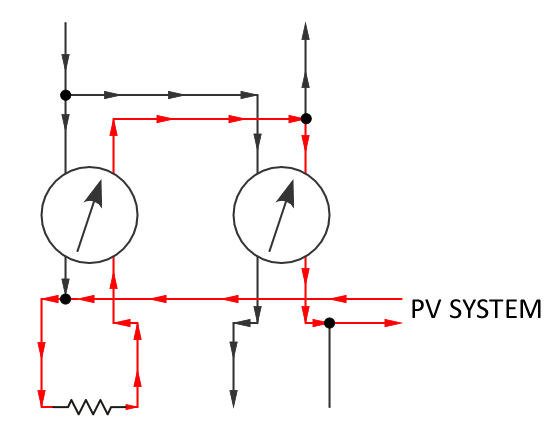Nope. As long as the meters are accurate for unbalanced loads, the accounting will be correct. Remember that if the PV output on the one line of service A exceeds the total 120/240 load of that service, the meter will register power going out to POCO. Whether that power goes out to POCO and vanishes or gets turned around immediately and sent to B does not matter. A will get credit for it.
The return current from the PV at B will still be credited to B, whether it goes to loads at B or is just the other side of the PV delivered to A.
Both A and B will get meter credit (or reduced total load "credit") for 1/2 of the 240 volt GTI output power, since each meter will see the PV as a 120 volt supply.
If there are no loads at all at either A or B, the PV current will go "out" through the meter at A and be matched by an exactly equal current back through the neutral at A. Also neutral current in the same amount at B.
The PV current delivered to B will be matched by an equal return current on the neutral at B and at A. Net result: the two neutral currents cancel out, leaving zero current in the neutrals and identical magnitude currents in the single phase lines at A and B.
Normally you would expect that an overall current balance would be present at the A and B meters, but because the PV constitutes a cross connection between the services the currents will NOT balance. Now if that causes problems for the way the meter was designed (and it will for some types of split phase meters that are not theoretically correct because they took a design shortcut!) then there may be odd problems.

A general inability for POCO and most others to understand what is really going on is one clear reason that the connection would not be allowed.


